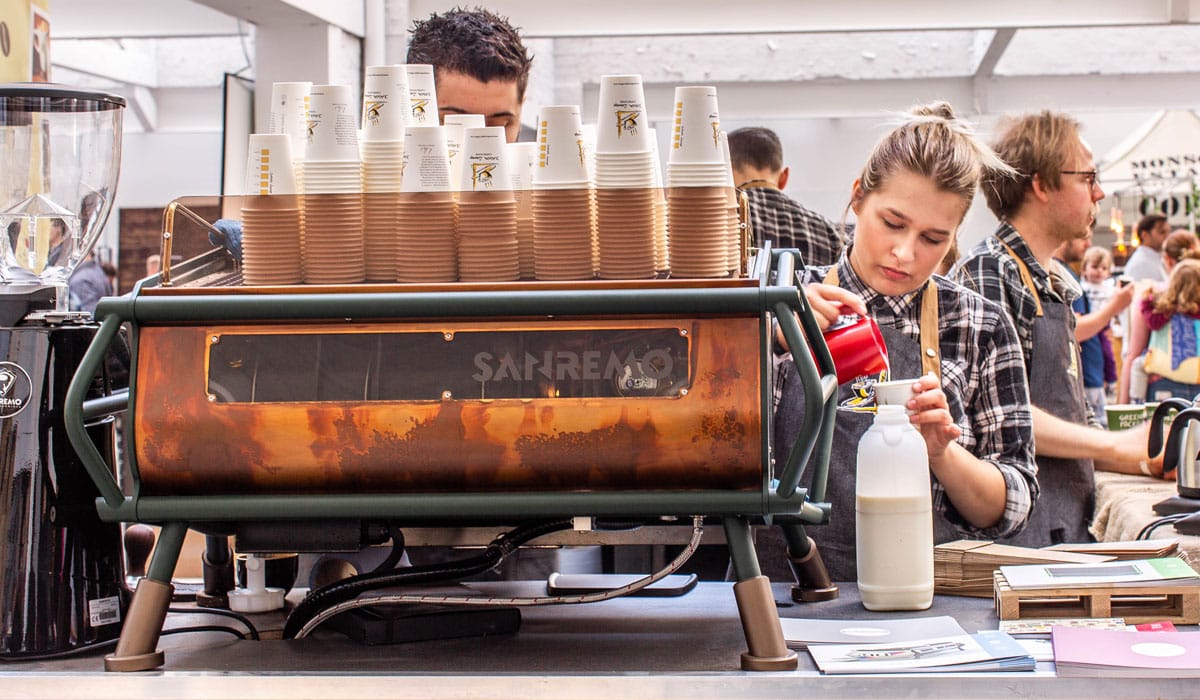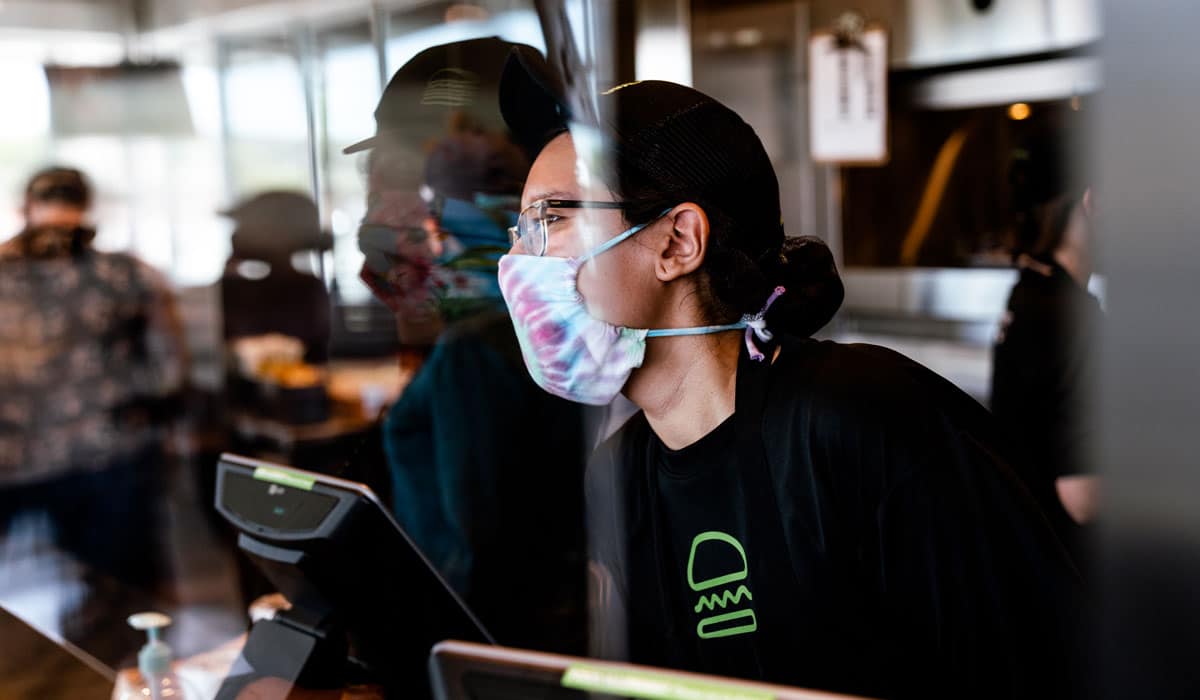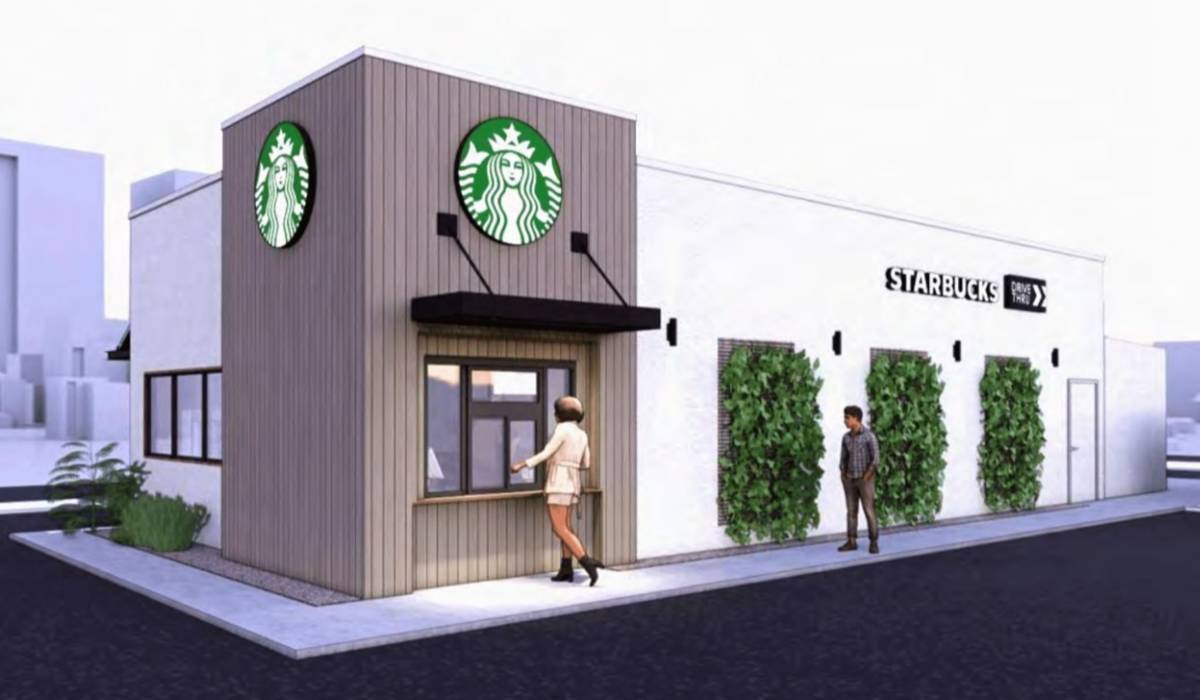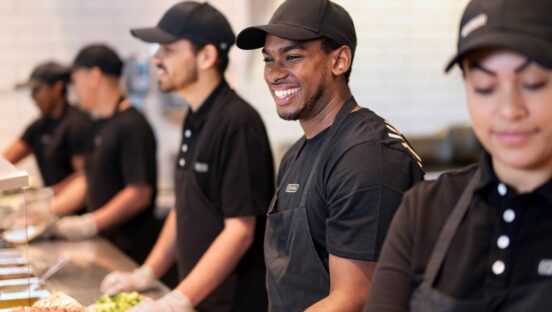The pandemic brought a catalog of questions to restaurateurs’ tables. Nothing was revolutionary, necessarily. Notions like mobile ordering and loyalty. Finding ways to alleviate drive-thru capacity. Whether or not guests even needed a dining room.
And just like early lockdown days, three vectors have driven evolution as operators approach 2022, according to new data from consulting giant Deloitte, which polled 1,000 consumers who dined in a restaurant within the past three months to field its latest “Restaurant of the Future Report.”
Convenience, digital, and safety. While these well-worn terms overlap more often than not, they point toward a single, overarching mandate that brands need to fundamentally change their business models.
In 2020’s study, which centered on “The Restaurant of the Future” arriving early, convenience had leapt to the forefront. What that meant, what consumers expected, and how brands could deliver, however, was where adjustments came fast and frantic. Dine-in shutdowns bloated drive-thru lanes and led restaurants on a search for omnichannel business. Pickup windows. Order ahead. Asking if speed of service was still the best metric to chase. This spawned everything from prototypes with conveyor belt food drop-offs to digital-only kitchens to rewards programs in every corner of foodservice.
READ MORE:
The 7 Restaurant Industry Trends You Need to Know in 2022
Fast Food Emerges from COVID a More Resilient Industry than Ever
14 Glimpses Into the Fast-Food Restaurant of the Future
Deloitte said convenience, the “most active frontier” last year, has continued its rapid maturation and is now a permanent fixture in the restaurant landscape. Meanwhile, safety—a reaction, not a strategy at COVID’s onset—continues to give way to more consistent and enduring approaches. The third vector, digital, is simply going to play a greater, evermore-central role due to the nature of today’s hurdles and a guest who’s formed COVID habits they likely won’t ever break.
In sum, when 2020 gave way to 2021, the idea “The Restaurant of the Future” was ahead of schedule was an undeniable trigger point. Today, the vision has begun materialize into something more lasting.
“It’s been said that the only constant is change, which holds true for the restaurant industry today,” said Jean Chick, principal, Deloitte Consulting LLP, and U.S. restaurant and food service leader. “The pandemic has accelerated the progress of the restaurant of the future, calling for fundamental shifts in business models to meet new demands. Now, amid continued pressures in areas like supply chain, safety-related costs, and labor availability costs, restaurants should work strategically to build loyalty among on-premises and off-premises diners. Those that can quickly adapt and meet diners’ evolving demands for convenience, frictionless digital experiences and safety can be poised to not only survive, but thrive.”

Starting with safety
Here’s a breakdown of consumer demographics who prefer enhanced cleanliness and safety:
- Baby Boomers: 32.3 percent
- Millennials: 25.2 percent
- Gen X: 23 percent
- Silent generation: 14.5 percent
- Gen Z: 4.9 percent
A third of Deloitte’s respondents said enhanced cleanliness and safety would make them more likely to return to on-premises dining sooner, and to dine out more frequently. Boomers, Gen X, and millennials appear more concerned with this topic than others. “The traditional measures of cleanliness and the more timely indicators of safety are some of the first things customers notice when they enter a restaurant,” Deloitte said.
In-store spacing, surface cleansing, food preparing, and employee safety measures pulsed in the survey. It’s a cross-section operators are plenty familiar with at this point—adopting cleanliness and safety policies, and then finding a way to visibly display those efforts.
More than half of consumers (55 percent) said they’d be willing to pay 10–15 percent more to know about the safety and cleanliness that surround the preparation and transportation of their food. In Deloitte’s observation, it’s further evidence consumers strongly value proof of safe practices. There’s nothing to suggest that’s reversing course.
Also, close to half (45 percent) of respondents said they were unlikely to return to a restaurant that had a food safety incident. Again, this isn’t new; the stakes are just higher. It casts a fresh light on sourcing, staff training, and traceability, Deloitte said.
Yet what customers prioritized above all other food considerations was “origin.” The average consumer in the study said knowing details surrounding where their food comes from would be worth as much as paying 6 percent more for their meal—“a potentially large area for margin growth,” the company said.
Something to consider along those lines: Prices for food away from home increased 5.3 percent year-over-year in October, according to the Bureau of Labor Statistics. Quick-service menu items rose 7.1 percent in the past year, while full-service meals lifted 5.9 percent. Both were the largest 12-month increases in recorded history.
If commodity inflation and labor challenges leave restaurants no choice but to charge consumers more, a counter for operators could be transparency, and giving customers information they feel good opening their wallets for. In an environment where price hikes have blurred segments (fast casual and quick service charge similar for food these days), these kinds of efforts could split the field.
As operators can attest, regulations that govern restaurants vary widely state to state, city to city, block to block, it feels like. This has been one of the most stumping challenges of multi-unit leadership during COVID.
Deloitte said the reality leaves it up to restaurant brands to set standards within their own organizations to keep employees and guests comfortable. Practices like wiping down surfaces, moving tables farther apart, and requiring employees to properly use PPE still make an impact.
Behind the curtain is a bit more complicated. “An exception to closed kitchen food preparation might be the buffet or salad bar—fixtures that are front and center when customers enter a storefront,” the company noted. “In this case, the visible evidence of change may simply be that communal, self-service options may no longer exist.”
Regardless, consumer attitudes toward safety seem a permanent fixture.

Back into convenience
More data:
How many consumers order delivery/takeout at least once a week?
- Now: 61 percent
- One year ago: 29 percent
- Two years ago: 18 percent
Consumers’ restaurant preference to order from at least once a week:
- Quick service: 62.6 percent
- Fast casual: 52 percent
- Grocery store: 48.7 percent
- Casual dining: 40.5 percent
- Convenience store: 28.2 percent
- Fine-dining restaurant: 12.5 percent
- Food truck: 11.5 percent
What’s become clear is consumers are already engaging with the “Restaurant of the Future.” In other terms, they want experiences outside the traditional dining room that provide the same quality and variety they expect, yet also balanced with convenient ways to choose, order, receive, pay for, and consume a meal. Nearly two-thirds (64 percent) of respondents in Deloitte’s study said they don’t anticipate returning to their pre-pandemic in-store dining frequency within the next six months. It’s a point that’s going to lead restaurants to keep tweaking convenience strategies in an effort to meet guests where they want to go.
The reason that’s such a disruptive notion is that it lit the fuse on something already rattling the future of restaurants. Headed into COVID, off-premises sales increased nearly four times faster than dine-in business, per financial services Rabobank. So 80 percent of restaurants’ U.S. dollar sales growth over the last three years came away from the dining room.
All told, COVID reset the trade-off expectations of consumers. Convenience doesn’t have to come at the expense of quality anymore. For every restaurant that gets that experience wrong, there’s now a brand working to get it right. Off-premises choice, whether at the drive-thru or through pickup, digital or not, has stuffed to the edges. A brand might not have a drive-thru, for instance, but it offers curbside, or pickup shelves. There are a lot of ways to get food quickly.
In turn, guest demands for away-from-restaurant channels has never been higher.
Takeout and delivery preference, Deloitte data showed, remain sharply higher—not only compared to pre-pandemic marks, but also linked to early COVID levels in mid-2020.
Seventy-nine percent of customers said they were more likely now to order from ghost kitchens, a trend that’s 20 percent higher than a year ago and 32 percent higher than two years ago.
“As the race to win the quickly growing off-premises market intensifies, brands should prioritize investment to help ensure the experience is efficient and simple for customers—even if that means fundamental shifts to operating models,” Deloitte said.
That might mean adopting kitchen models that feature dedicated spaces to prepare food for off-premises orders. In comparable ways, the company added, restaurants could consider expanding drive-thrus or shrinking dining rooms to meet rising demand. Smaller stores, drive-thru-only formats, included.
Among the options for restaurant ordering, the most popular, at 37 percent, was the drive-thru. Hence, the rapid move among fast casuals (Chipotle, Noodles & Company, etc., Pizza Hut can fall into this conversation as well) to take advantage of the suddenly connected digital experience by adding pickup windows into current and future builds. What Pizza Hut calls its “Hut Lanes,” and Chipotle’s labels the “Chipotlane.” In the former’s case, Pizza Hut actually had hundreds of windows attached to restaurants before COVID. But the disconnected digital world we lived in meant few customers (or franchisees for that matter) saw it as a viable or frictionless option. Thanks to the pandemic and the contactless preference/systems born out of that demand, the brand was able to flip “Hut Lanes” on at 1,500 locations essentially overnight. In some ways, you could say the pandemic took care of the marketing.
Chipotle debuted its 250th “Chipotlane” over the summer and expects 70 percent of its 200 or so openings this year to include the feature. These units drive 14 percent higher overall digital sales mix and, critically, skew toward more profitable carryout orders.
In both cases, whether it’s future builds or add-ons, the whitespace to serve this convenient occasion is massive. And drive-thru lines are clearly crossing into all segments.
Broadly, Deloitte said, recent changes mean the “smallest” restaurant you visit today isn’t a cozy bistro—it’s one you can’t actually step into.
“Restaurants should be finding an advantage in customers’ willingness to order this way—many ought to consider introducing single locations that provide more than one dining option, or contemplate launching new ghost-only concepts in existing physical stores, all of which lets restaurants realize increased sales volume from less real estate,” the company said.
Delivery has moved upstream, too. Consumers demand quality, even if they don’t have to leave the couch. Three out of five respondents said they now expect the same quality and freshness in delivery and takeout as they do in the dining room. “Areas of investments and exploration could include menu customization to optimize for off-premises transit time, updated packaging technology for freshness, and new food preparation methods,” Deloitte said.
[image source_ID=”131312″]
The digital vision
Quick-serves, in particular, understand what’s at stake. Digital touches every aspect of the customer journey at this turn of the pandemic rebound, from ordering to preparation to payment and fulfillment. When ordering food off-premises, more than half of guests consistently do so using a digital app.
And for customers who prefer and still take advantage of on-premises ordering, Deloitte said, preference for digital ordering continues to climb—even if that means less interaction with traditional restaurant staff.
With guests who want to stay in their cars, four out of five (81 percent) said they would opt for an automatic voice system built into the drive-thru lane. That’s a point worth running a highlighter through.
Two out of five off-premises guests (40 percent) said they’d rather use a restaurant’s own branded website or app than a third-party marketplace. Only 11 percent preferred an aggregator platform. “The lesson here,” Deloitte said. “If restaurants give their customers a way to order directly from them, they will do so time and time again.”
Less visible, the company added, is how digital changed food preparation. Kitchen automation has the potential to reduce errors and improve accuracy as well as boost efficiency and cost control. Fifty-four percent of respondents said they were willing to order from a partially or fully automated kitchen. Can restaurants allocate some of their shrinking footprints to automation?
Digital shook the roots of payment as well. Twenty-five percent of consumers said they prefer a digital or contactless payment method to a physical one. Delivery was the preferred method of receiving food at COVID’s depths. It’s one reason so many brands turned up the dial on contactless delivery.
Last year, 57 percent of respondents in Deloitte’s study used contactless delivery at least half the time. That’s held, driving the number of consumers who are willing to receive food delivered by a drone or driverless car up 10 percent over the past year.
Use of digital app to order food for off-premises occasions:
- 2020: 54 percent
- Today: 57 percent
Digital ordering growth
- 2020: 53 percent
- Today: 64 percent
Restaurants are seldom slow to capitalize on consumer preference. If transactions are going digital, brands are going to digitize. But Deloitte noted there’s other opportunities to tackle. Restaurants can view digital efforts as a way to reduce long-term costs through technologies such as automation and driverless delivery—which customers have shown acceptance of. “Among the modernization tactics brands should evaluate are investments in mobile applications and consistent cross-platform digital experiences,” the company added.
The loyalty race is on as well. The average customer participates in only two restaurant loyalty programs, Deloitte said. So the brands that captures guests early might be the ones that hold onto them.
In terms of how to do so, consumers in the study said they look for coupons, reduced prices, free items, and exclusive products in their app program choices.
“These are the frontiers along which the restaurant industry of tomorrow will grow,” Deloitte said of safety, convenience, and digital. “Now they should decide where to invest time and resources exploring those frontiers—how aggressively and how quickly.”








